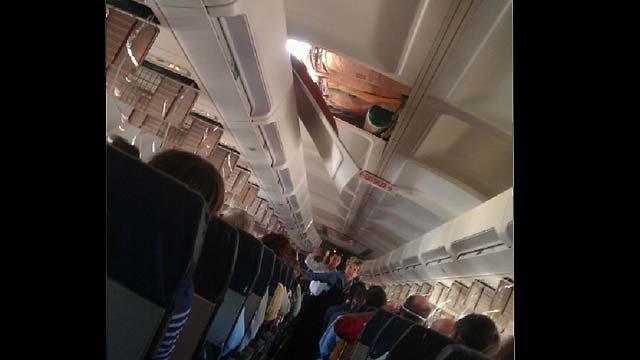
HOLE IN JET QUESTIONS AIRLINE SAFETY
After a 3 foot hole in a Southwest Airlines jet forced the plane to make an emergency landing over the weekend, should we be more concerned with the continued use of older planes and overall airline safety?
Southwest flight #812, which was in route from Phoenix to Sacramento last Friday, lost cabin pressure after a hole developed in the roof, prompting frightened passengers to grope for oxygen masks as the plane made a terrifying nose-dive descent. With passengers able to clearly see the sky through the rather large hole, the plane was forced to make an emergency landing at a military facility in Yuma, AZ. One passenger called the chaos on the plane “pandemonium,” with one flight attendant even fainting from lack of oxygen.
The 15-year-old Boeing 737-300 lost pressure because of a fuselage rupture, forcing Southwest officials to pull about 80 similar planes out of service for inspection while canceling 300 flights. The 737-300 is the oldest plane in Southwest’s fleet, and the company is retiring 300s as it take deliveries of new Boeing 737-700s and 737-800s (as of next year). But the process of replacing all the 300s could take several years.
So here’s the question: with a workload of 10, 20, or more flights every single day, are some of these planes simply overworked and too old to remain airborne? Should airlines cut back on the amount of flights these planes are forced to fly daily? Should airlines spend the cash to upgrade existing planes to better safety standards, or simply replace older planes altogether after a standard amount of years?






